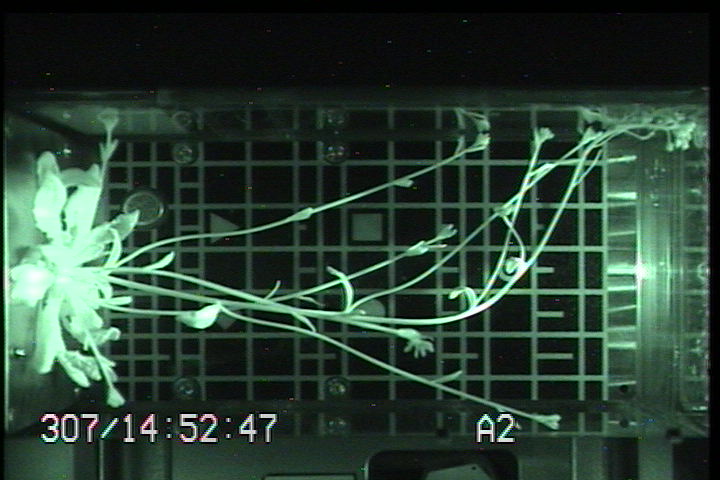The miniaturised experimental greenhouse – EMCS – has provided groundbreaking knowledge on plant biology through a number of successful experiments and more experiments are under way. These experiments are important for deep-space missions, when astronauts will rely on plants for food, oxygen and waste recycling. Establishing a human outpost on the Moon or Mars will require a certain amount of self-sufficiency, and growing plants for consumption will be essential.
The European Modular Cultivation System (EMCS) is an experimental facility onboard the International Space Station (ISS) dedicated to studying plant biology in a reduced gravity environment. It supports the cultivation, stimulation, and crew-assisted operation of biological experiments under controlled conditions (e.g. temperature, atmospheric composition, water supply, illumination, observation, and gravity) to cultivate plants on orbit.
The facility nurtures plants from seedlings to maturity, and allows both astronauts in space and research teams on the ground to intervene and change the conditions. The facility has performed multi-generation (seed-to-seed) experiments and studies the effects of gravity and light on early development and growth, signal perception and transduction in plant tropisms. TROPI “Analysis of a Novel Sensory Mechanism in Root Phototropism” experiment investigated the growth and development of plant seedlings under various gravity and lighting combinations. An unexpected finding was that the response to red and blue light was different under simulated lunar and martian conditions.
Plant Growth in Space
Growing plants for food – the prehistoric transition from hunting and gathering to settled agriculture also known as the First Agricultural or Neolithic Revolution – was a significant step in the history of humankind. In the Space Age, growing plants for food during spaceflight and on other planets will be necessary for a sustainable exploration of our Solar System.
In the video, Javier Medina from The Spanish National Research Council (CSIC) explains the attraction of plants for human exploration to supply oxygen and food. He introduces current and future experiments on the ISS into plants and explains the logic of these greenhouses in space.
Such experiments are not only helping scientists to prepare for deep space travel but are also improving our knowledge of growing crops at home. The more we know about plants the better we will be able to cultivate them – on the Moon or Mars – and on Earth.







